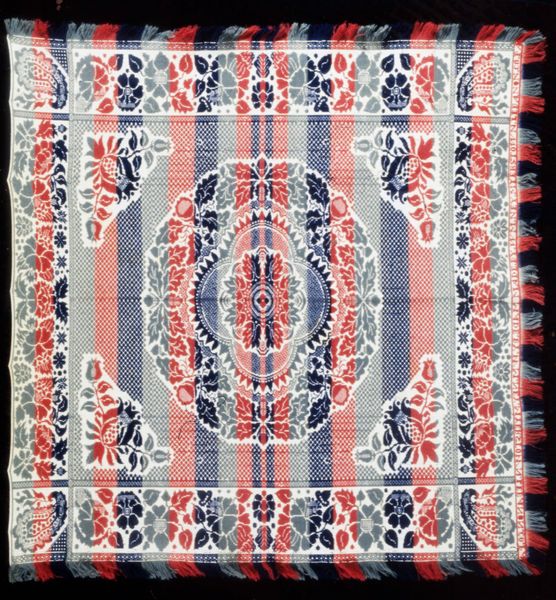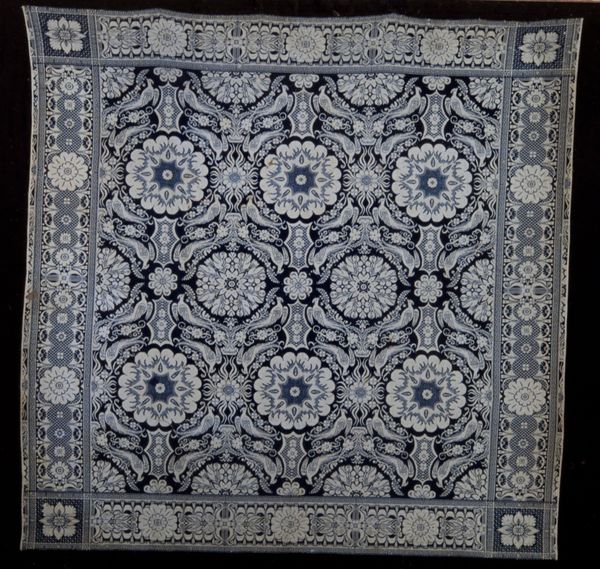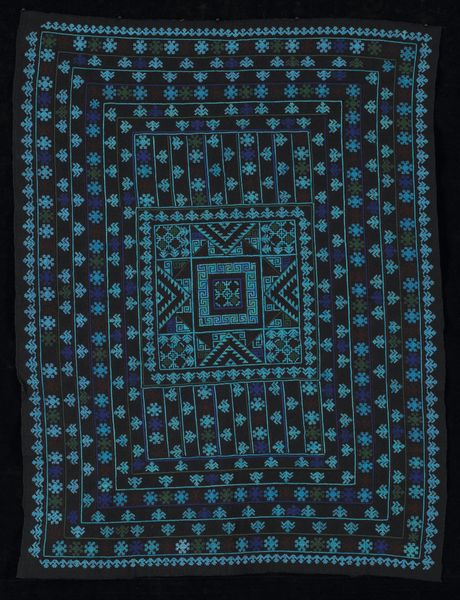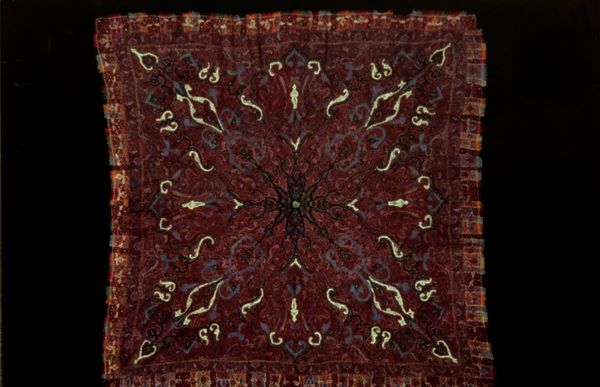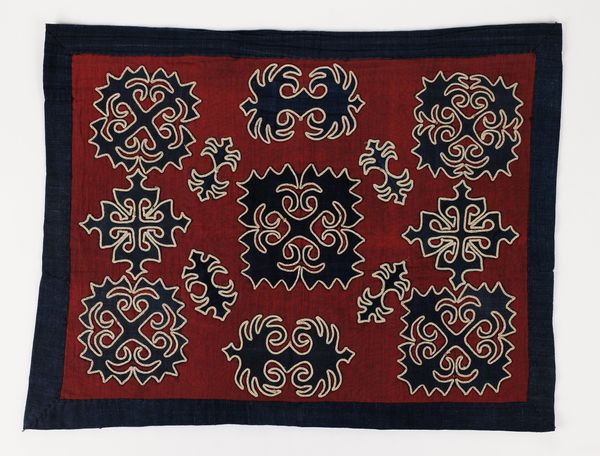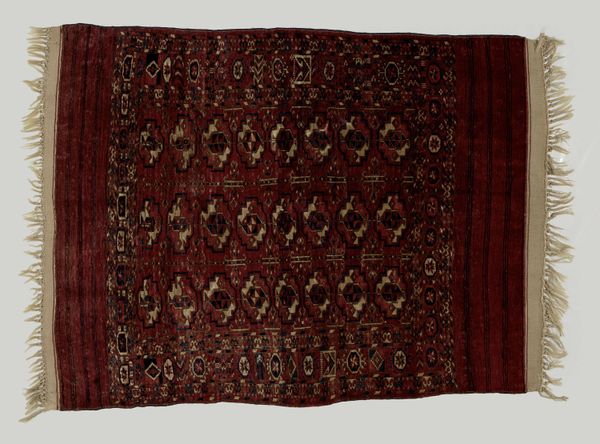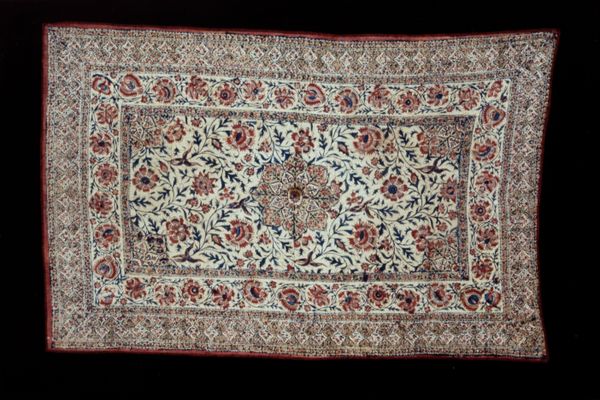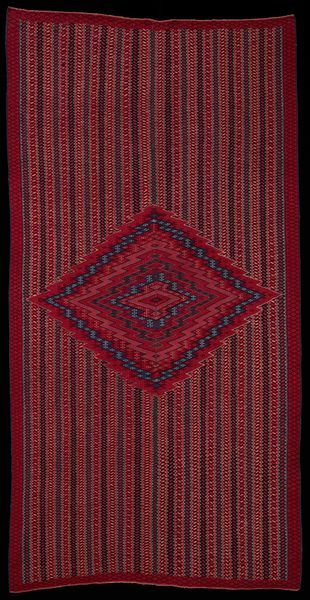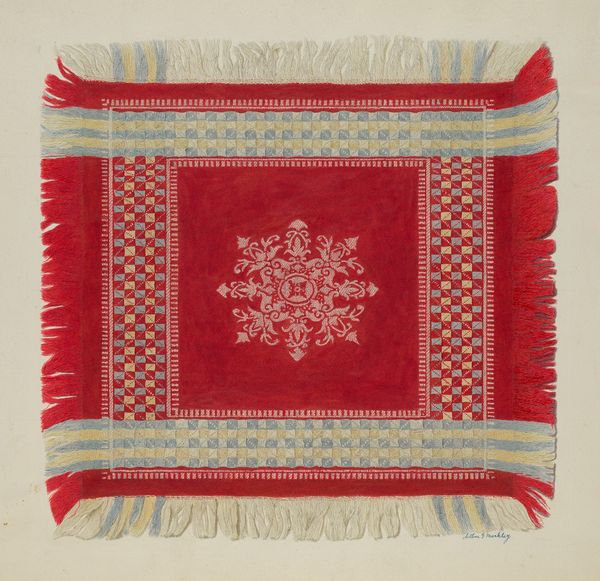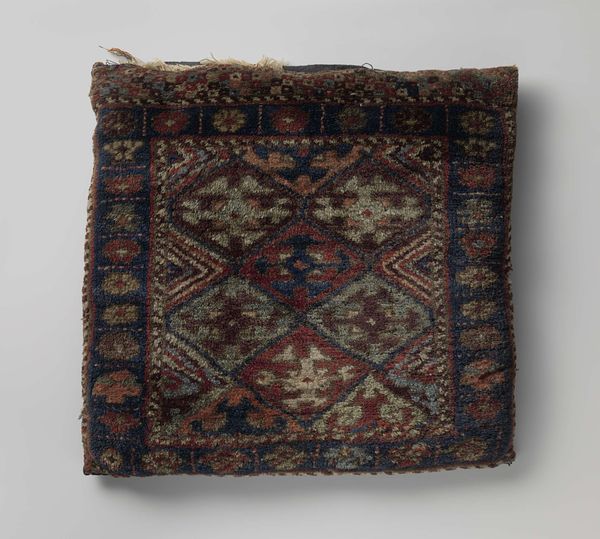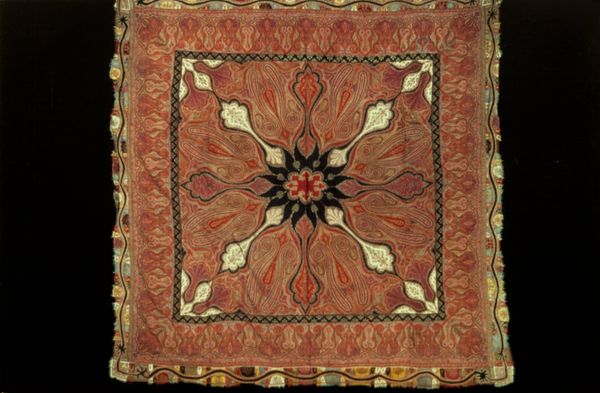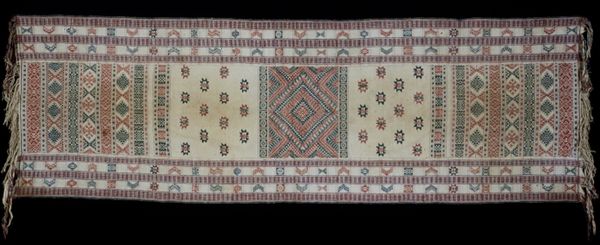
textile
#
folk-art
#
textile
#
geometric pattern
#
folk-art
#
geometric
Dimensions: 94 x 87 in. (238.76 x 220.98 cm)
Copyright: Public Domain
Curator: Oh, wow. I am just loving the symmetry and the palette—this must be the Jacquard Coverlet dating from the 19th century, found here at the Minneapolis Institute of Art. Editor: It feels instantly homey, you know? Like something my great-grandmother would have cherished. Not grand, but deeply personal, comforting even, with its careful geometries. Curator: The coverlet speaks volumes about material culture in the United States during that time. Woven with the aid of the relatively new Jacquard loom technology, it made complex patterns more accessible, and thus reflects the intersection of industrial innovation and folk artistry. Editor: Folk artistry… that’s it! There’s a humble dedication present in those repeated motifs and restrained color choices—the blues, reds, and whites. No exploding statement here, just steady love. Curator: Exactly. Before mechanized weaving, these kinds of complex, all-over designs were the realm of only the wealthy. Suddenly, relatively intricate bed coverings could be acquired by the burgeoning middle class. Editor: You can almost feel the dreams woven in, can't you? And the fact that this wasn't something outsourced, but created—maybe not entirely *by*—but certainly *for* the community lends such significance to something like a bed covering, a backdrop for sleep. Curator: And let's remember the textile trade at this time – not only the cotton production by enslaved populations, but the impact the manufacturing process had on early labor practices, with women workers frequently underpaid in dangerous conditions. Editor: Ah, there it is. It’s bittersweet to imagine comfort originating, indirectly, from sources of discomfort. It makes the geometry even sharper; like we’re looking through a lens—layer upon layer of human existence, so deeply intertwined. Curator: Absolutely. It's a powerful reminder that art isn't created in a vacuum. It's inextricably tied to labor, technology, and broader social circumstances. Editor: Well, suddenly a simple bed covering invites contemplation beyond just, you know, softness and aesthetics. Material matters, inside and out. Curator: Indeed. Viewing a piece like this encourages us to consider our own consumption patterns and the origins of everyday objects.
Comments
No comments
Be the first to comment and join the conversation on the ultimate creative platform.
